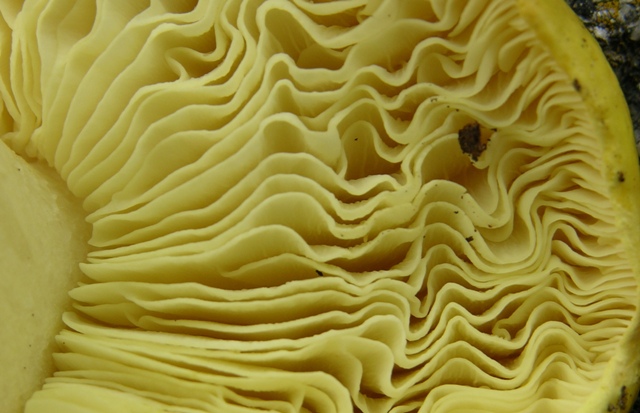The Fun in Fungi
By Hilary Burgess
My first exposure to identifying and exploring mushrooms was through a non-credit class at Colorado Mountain College – although I can’t recall the year, it was at least 20 years ago. A good-sized group of us piled into cars and we headed into woods up the Frying Pan with an instructor who smoked and left his cigarette butts in the forest. We were appalled and picked up after him, but he gave us the basics and showed us how to make spore prints and how to identify gill attachments and all the other little things a person needs to know in order to get started.
It doesn’t take long to figure out that there is a stunning volume of fungi out there, and that identifying a particular mushroom to species can be frustrating and often impossible. Some mushrooms are very woody and actually grow on top of each other year after year but, generally, mushrooms are very moist and quickly decay into a goopy mess or just shrivel up and are gone. So, that is when I became a photographer, too! I have volumes of files of photos of unnamed mushrooms and, of course, I do know quite a few. Most are sorted into files by genus, but I also have a file called “Small Pretty Ones” because sometimes I just want to look at pretty mushrooms.
In the years following the CMC class, I had summers when I entered the woods to specifically look for a certain edible fungi, and some years the summers just floated by with nary a mushroom plucked. But year-by-year, I inched myself a little more into the field, and as time marched on I became more interested in identifying them and figuring out their rhythms.
I do eat wild mushrooms, and there have been heart stopping years when I have stumbled upon huge patches of prime edibles — pounds and pounds to dehydrate and save to enjoy over the winter, but my heart also skips a beat when I see a mushroom I’ve never seen before. Last summer I was with the ACES mushroom class and we went to an area I rarely go to, and because conditions were perfect and a lot of people were collecting and sharing, I saw some new fungi that knocked my socks off.
“Is this going to be a good year?” I ask myself every spring, but then what is a bad year? Every year is so different that it is impossible to say what a “normal” year is.
Mycelium is the organism that produces fungi, much like an apple tree produces apples. Some mycelium is fussier than others, but conditions need to be right in order to produce a mushroom. So, yes, in rainier years we see more fungi, but the soil also needs to be the right temperature for the right amount of time, there needs to be some heat during the day and the nights can’t be too cold, and the plants and trees in the area need to be healthy.
Maybe last year an area produced huge volumes, but this year it’s resting. Pick a year and something is delightfully different from the year before. A few summers ago it was so dry, we didn’t have much snowpack, and the season was pretty sparse, but last summer was a delightful playground and there were amazing finds.
When I go out into the woods I take my friend’s two dachshunds and my dachshund/Chihuahua mix. Not once have they been helpful in finding mushrooms, collecting them, or carrying them back to the car and helping me identify them. In fact, it’s always a challenge to photograph a mushroom because one of the dogs is always walking through the picture frame or stomping on the mushroom that I’m trying to shoot. But, even in a drought, when I really want to find something interesting and the forest floor is dry, I am still outside in the woods in the Rocky Mountains enjoying a great hike with 3 funny little dogs.
This year holds so much promise as all springs do. Will my Chanterelle patch take off? Can I find again that delicate white trumpet mushroom that was so beautiful but I left it because it was pouring rain and I was trying to get back to the car? Will the snowpack hold long enough to saturate the forest floor? Will it rain in July and set up the greatest season ever? I can’t wait to find out.
Hilary Burgess is an amateur mycologist who occasionally gives lectures on mushroom identification. She works full time at the Pitkin County Landfill and when she’s not out photographing mushrooms she’s in her garden growing peas, flowers and sometimes, even mushrooms.


great post